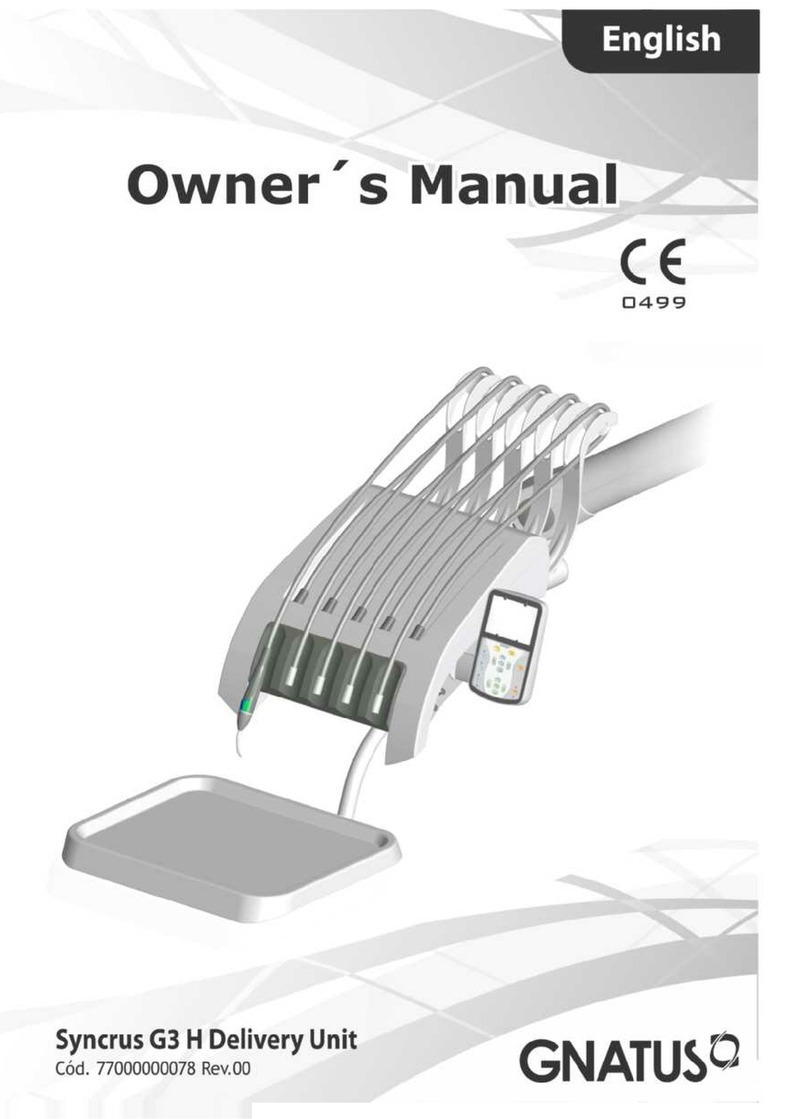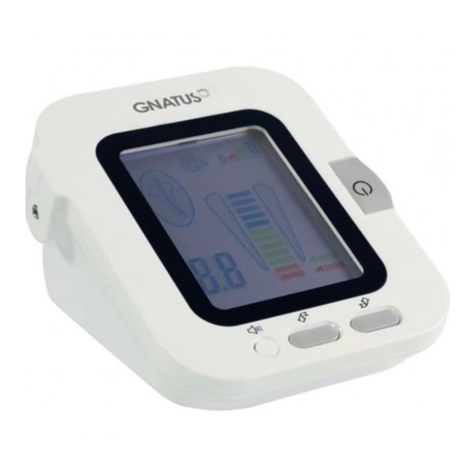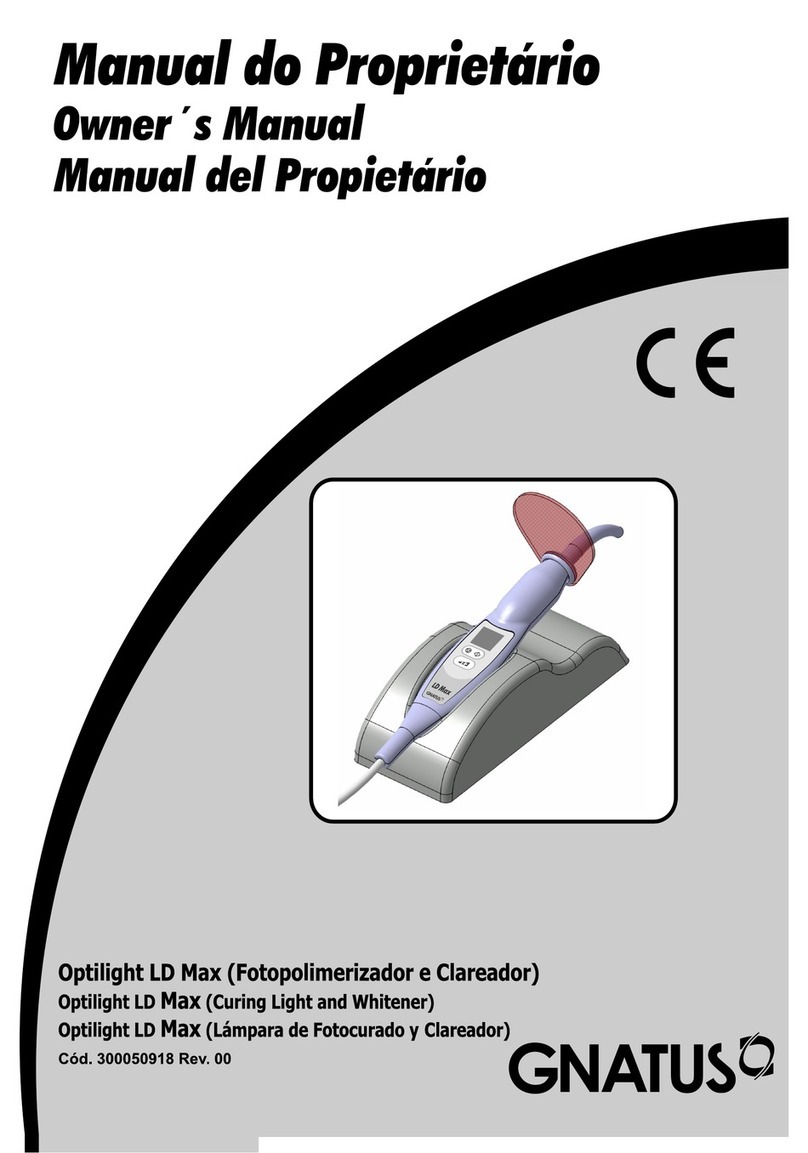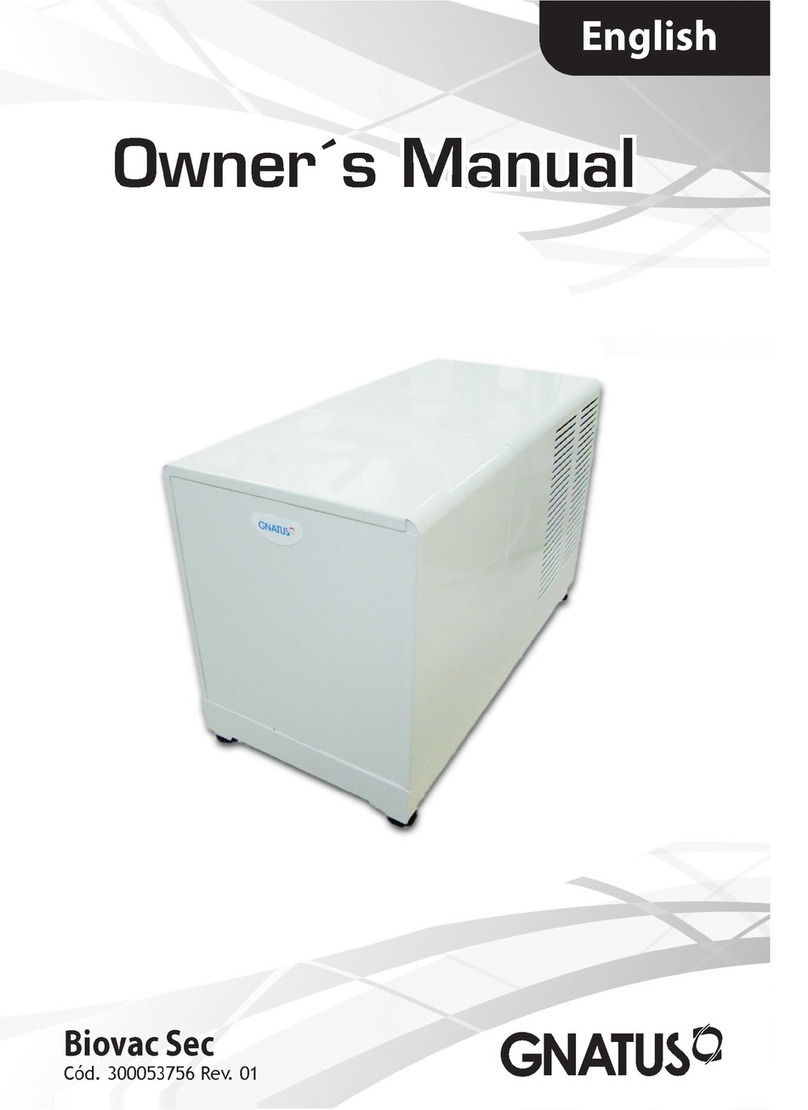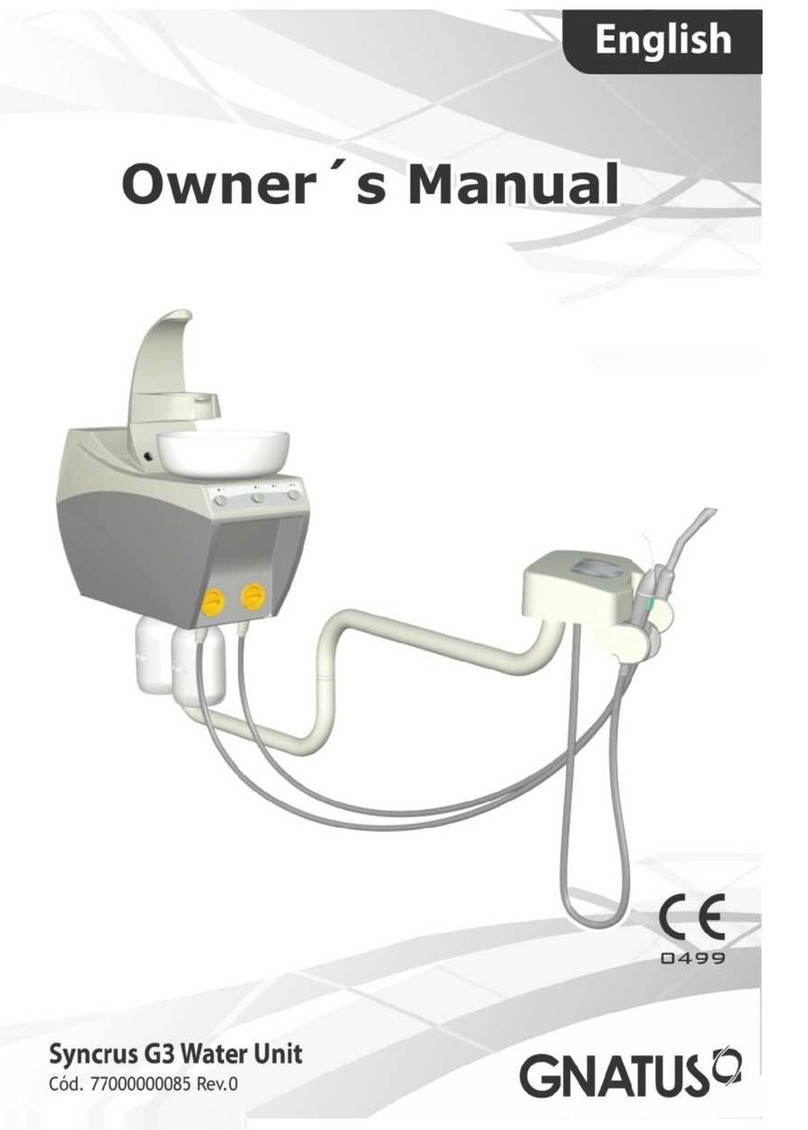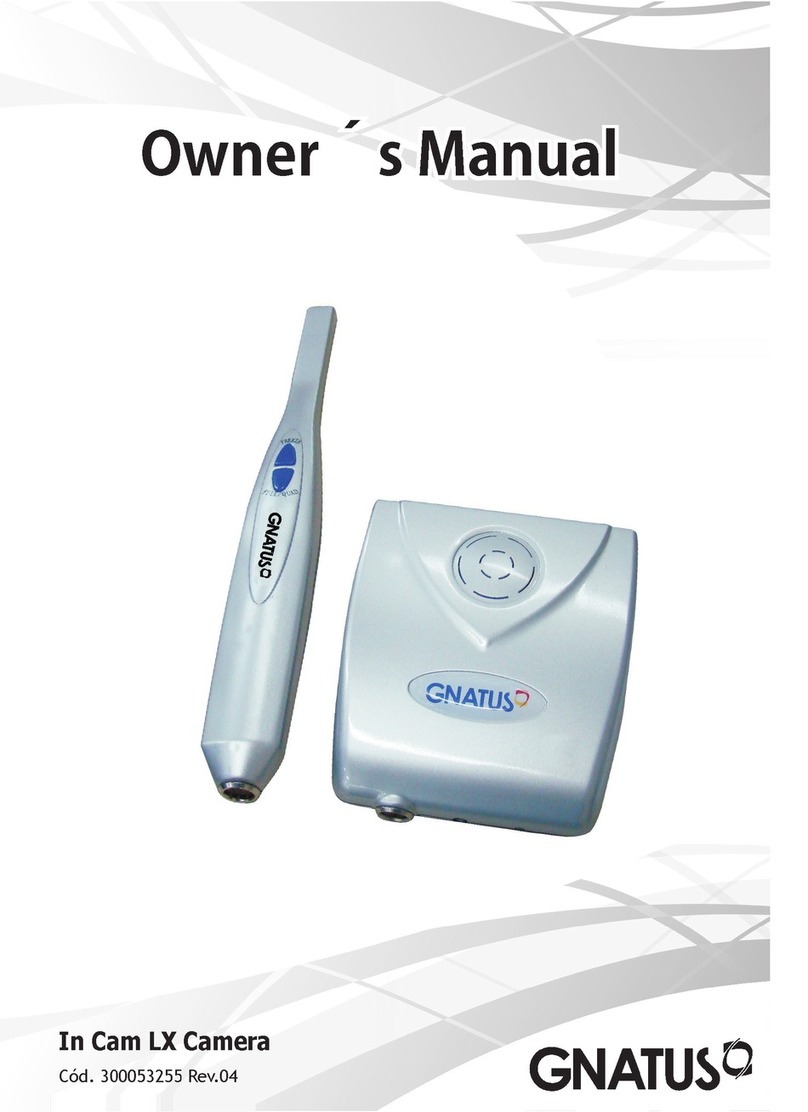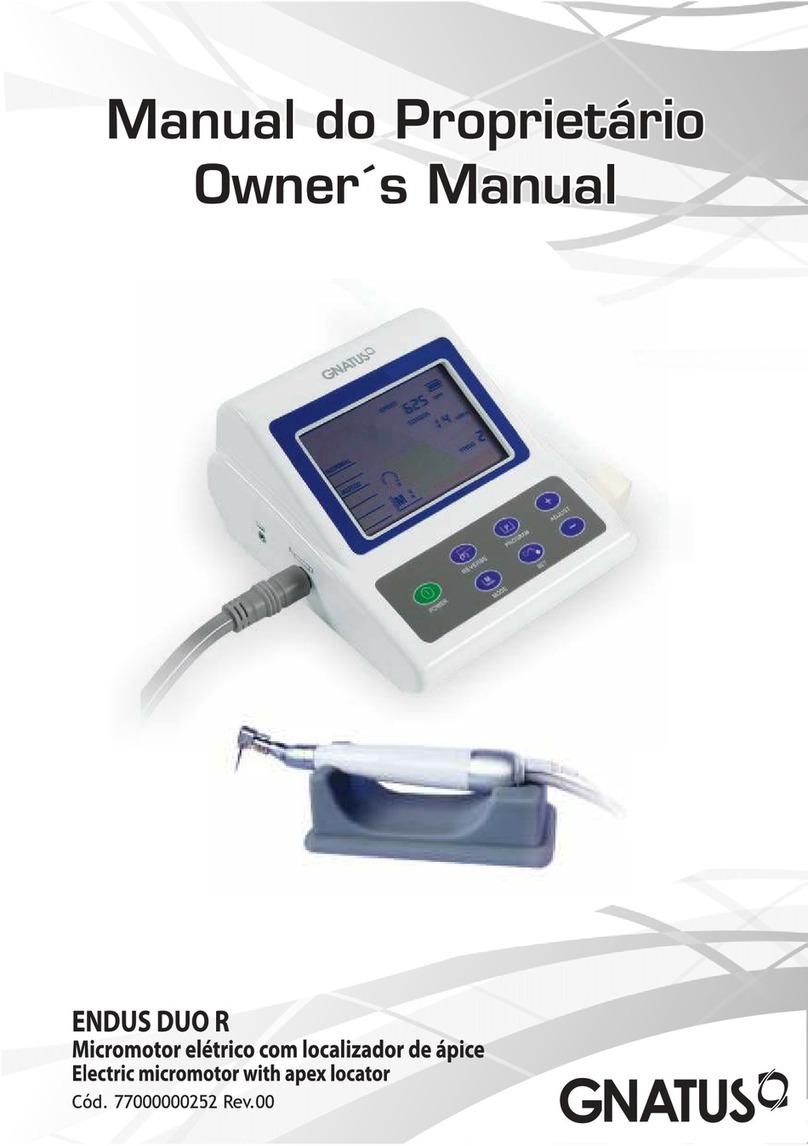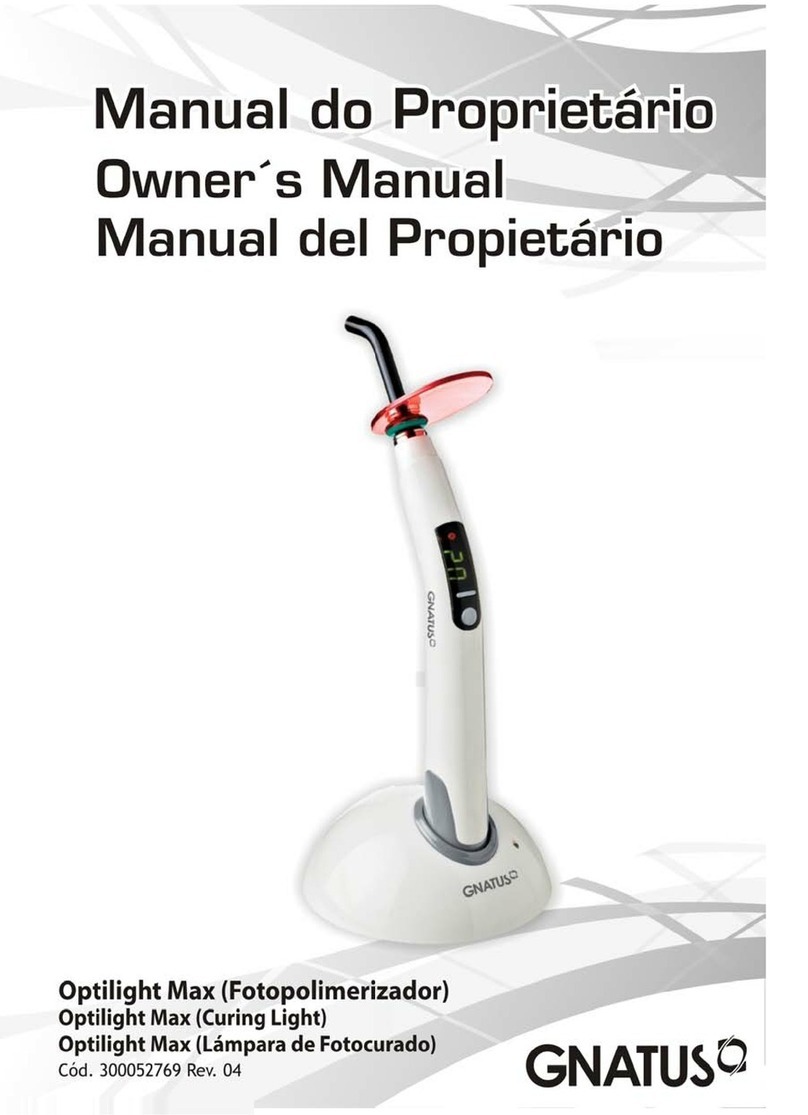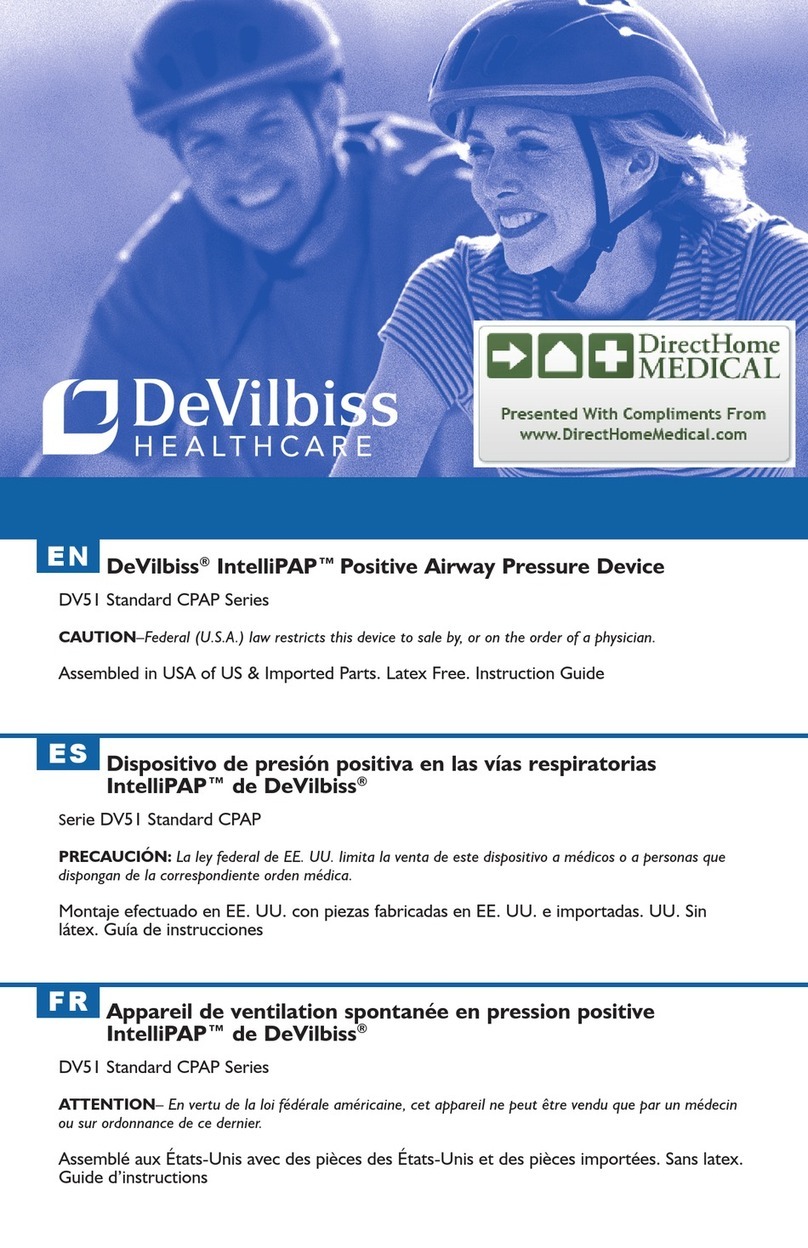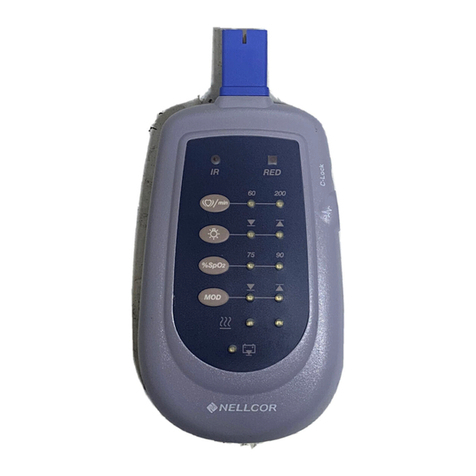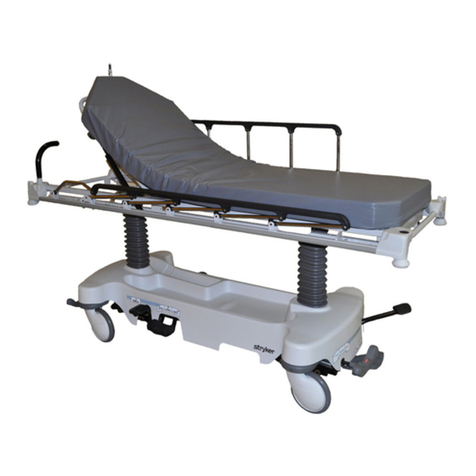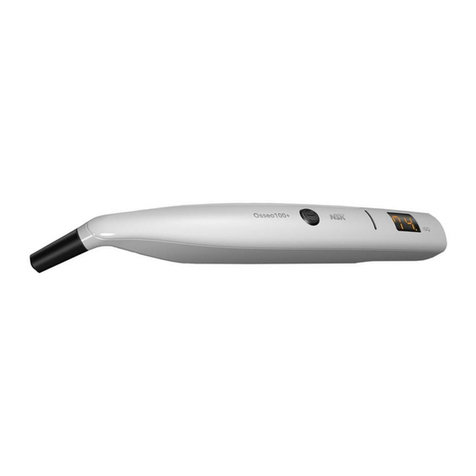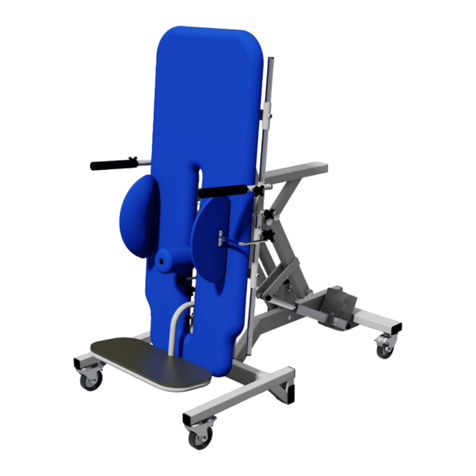GNATUS ENDUS User manual


2
PRESENTATION OF MANUAL
INSTRUCTIONS FOR USE
CAUTION
Technical Name: Apex locator - Dental Equipment
Trade Name: Apex locator
Model: Endus
Brand: Gnatus
Manufacturer / Distribuitor:
Alliage S/A Indústrias Médico Odontológica
C.N.P.J. 55.979.736/0001-45 - Insc. Est. 582.002.897.114
Rod. Abrão Assed, Km 53+450m - Cx. Postal 782 CEP 14097-500
Ribeirão Preto - S.P. - Brasil
Telefone +55 (16) 3512-1212
Technical Duties: Daniel R. de Camargo
CREA-SP: 5062199650
Registration ANVISA #: 10069210076
For improved safety:
Read and understand all the instructions contained in the Instructions for Use before installation
or operation of this equipment.
Note: The Instructions for Use must be read by all persons that operate this equipment.

3
INDEX
02 PRESENTATION OF MANUAL
04 IDENTIFICATION OF EQUIPMENT
06 MODULES, ACCESSORIES, OPTIONS AND MATERIALS OF CONSUMPTION
08 TECHNICAL SPECIFICATIONS
08 General features
09 Electromagnetic emissions
13 Dimensions
14 Packing symbols
14 Product symbols
16 INSTALLATION OF EQUIPMENT
17 EQUIPMENT OPERATION
21 PRECAUTIONS, RESTRICTIONS AND WARNINGS
21 Transportation, storage and operation
21 Sensitivity to predictable environmental conditions in ordinary situations of use
22 Precaution and warnings “during the installation” of the equipment
22 Recommendations for preserving the equipment
22 Precautions and warnings “during the use” of equipment
23 Precautions and warnings “after” the use of equipment
23 Precautions and warnings during the “cleaning and disinfection” of equipment
23 Precautions in case of alteration in the functioning of equipment
23 Precautions to be adopted against foreseeable or uncommon risks, related to the deactivation
and abandoning of equipment
24 CORRECTIVE AND PREVENTIVE MAINTENANCE AND PRESERVATION
24 Additional procedures for reuse
24 Cleaning
24 Disinfection
25 Sterilization
25 Preventive Maintenance
25 Corrective Maintenance
26 UNFORESEEN EVENTS – SOLUTION OF PROBLEMS
26 EQUIPMENT’S WARRANTY
26 FINAL CONSIDERATIONS

4
IDENTIFICATION OF EQUIPMENT
Dear Customer
This manual is a general presentation of your product and it will give you important details to help
you to solve possible problems.
Please, read it and keep this with you.
Indication of Equipment
The indications regarding the use of the Endus Apex locator are below:
• In routine situations of the dental treatment;
• For the detection of perforations, fractures and root reabsorptions;
• For the follow-up of the amount of work during the cleaning and modeling process of curve roots
(dynamic odontometrics);
• Pregnant patients and patients that presented nausea during the radiographic measurements.
This equipment is for exclusive odontological use, and it should be handled and used by an expert
professional (professional properly certied, according to local legislation of the country) observing
the instructions contained in this manual.
It’s an user obligation to use the equipment in perfect working conditions and to protect himself/
herself, the patients and third parties against eventual dangers.
IDENTIFICATION OF PRODUCT
Technical Name: Apex locator - Dental Equipment
Trade Name: Apex locator
Model: Endus
Brand: Gnatus

5
Equipment Description
The Apex locator Endus is a high precision electronic equipment, modern and that should be used
in endodontics to help with canal treatments.
It’s used to measure the precise tooth length - (It determines the length of work) – up to where the
instrumentation and lling of a tooth will take place, so that the endodontic treatment respects
the biological limits of the dental structure.
Main aspects:
• Indicates precisely the cement dental junction.
• It is not subject to interference from the anatomic structures adjacent to the tooth.
Therefore, the fact of the canal being dry or full with electrolytes, blood and physiological brine
does not aects the result of the measurement;
• Less time for obtaining the length of work;
• It has a frontal LCD display with the following symbologies:
- Tooth length meter;
- Indicator when the le is placed on the canal of the dental root;
- Sound indicator;
- Energy consumption indicator;
• It operates automatically, not needing manual adjustments;
• Equipment functions with batteries AAA – 1,5V.
Physics Principle used by the equipment
It is well understood that the tooth works like a capacitor with accumulation of electric charges
at the periodontal and on the inside of the root canal. The dentin works like an insulating for the
propagation of electric current throughout all the extension of the root canal.
The apex locators work based on the principle of constancy of the electric current between the
oral mucosa and the periodontal ligament. The electronic method takes into consideration the
dierence of electric conductivity of a metallic instrument on the inside of the root canal and the
conductivity of the periapical tissue. The electric current existing on the root canal would complete
the circuit at the moment that the electrode, le, touched on the tissue uid, indicating the most
apical portion of the root canal “the apical foramen”.
IDENTIFICATION OF EQUIPMENT

6
MODULES, ACCESSORIES, OPTIONS AND MATERIALS OF CON-
SUMPTION
07 06
05
01
10
11
12
04
03
02
09
08
01 - On/O Key
02 - Sound adjustment Key
03 - Key for the apex depth adjustment (deeper)
04 - Key for the apex depth adjustment (less deep)
05 - Indicator for the power level
06 - Sound level indicator: Mute, low, medium and high.
07 - Visualization of the le position
08 - Connection of the measurement cable
09 - Indicator of the level of advancement of the canal
10 - Meter of the depth of advancement of the canal
11 - APEX (ideal level of the root apex)
12 - OVER (apex exceeding area)

7
Accessories that accompany the product
01 - File support (02 units)
02 - Cable for measurement
03 - Stainless steel labial Clip (04 units)
04 - Batteries AAA 1,5V (05 units)
01
03
02
04
The use of any part, accessory or material neither specied nor foreseen in those use
operation instructions and it is of the user’s entire responsibility.
MODULES, ACCESSORIES, OPTIONS AND MATERIALS OF CON-
SUMPTION

8
TECHNICAL SPECIFICATIONS
Model
Endus
Classication of Equipment as per ANVISA
Class II
Classication of Equipment as per standard IEC 60601-1
Protection against Electric Shock - Type B and Class II Equipment (IEC 60601-1)
Protection against harmful water penetration
IPX 0
Operation mode
Continuous operation
Batteries
AAA 1.5V (05 units)
Voltage
DC7,5V
Power consumption
<0.05W
Current
<10.µ A
Display mode
Display LCD 5”
Net weight
0,365 kg
Gross weight
0,787 kg
Time sounds
The device has 4 levels of sounds:
2,0mm to 1,0mm paused beeps / 1,0mm to 0,5 continuous / 0,5mm to 0,0mm short and frequent
beeps and below 0.0mm (OVER) intermittent beeps.
Technical characteristics of the equipment and its accessories

9
Electromagnetic emissions
The materials used to produce the equipment are Biocompatible.
Use of dierent cables, transducers and accessories from those speci ed may result in
increased emissions or decreased immunity of the equipment.
TECHNICAL SPECIFICATIONS
Electromagnetic Emissions
The Endus is made to be used in the electromagnetic environments specied below. The client
or the user of the Endus must be sure that it is used in such environment.
Emission test Compliance Eletromagnetic environment - Guide
RF emissions
ABNT NBR IEC CISPR 11
Group 1 This Endus uses RF energy only for internal
functions.
However, its emissions are too low and it's
unlikely to cause any interference in the
equipments next to it.
RF emissions
ABNT NBR IEC CISPR 11
Class B
Emissions of harmonics
IEC 61000-3-2
Class A This Endus is proper to be used in all
establishments; including domestic
settings and those directly connect to a
public low voltage distribution which feeds
domestic buildings.
Fluctuation of Voltage /
Emissions of icker
IEC 61000-3-3
As per

10
TECHNICAL SPECIFICATIONS
Guidelines and manufacturer's declaration - electromagnetic immunity
The Endus is made to be used in the electromagnetic environments specied below. The client
or the user of the Endus must be sure that it is used in such environment.
Immunity
test
ABNT Test level
NBR IEC 60601
Level of
compliance
Electromagnetic
environment Directives
Electrostatic
discharge (ESD)
IEC 6100-4-2
± 6 kV Contact
± 8 kV Air
± 6 kV Contact
± 8 kV Air
Floors should be wooden,
concrete or ceramic. If
the floor is covered with
synthetic material, the
relative humidity should be
at least 30%.
Quick electric
transitory phases
/ train of pulses
(”Burst”)
IEC 61000-4-4
± 2 kV in power
supply lines
± 1 kV in input /
output lines
± 2 kV in power
supply lines
± 1 kV in input /
output lines
It is advisable that the
quality of the power supply
should be that of hospital
or typical commercial
environment.
Surges
IEC 61000-4-5
± 1 kV lines (s) to
lines (s)
± 2kV lines (s) to
ground
± 1 kV lines (s) to
lines (s)
± 2kV lines (s) to
ground
It is advisable that the
quality of the power supply
should be that of hospital
or typical commercial
environment.
Reduction,
i n t e r r u p t i o n
and variance of
voltage in power
supply input lines
IEC 61000-4-11
< 5% Ut
(>95% drop in Ut)
for 0,5 cycle
40% Ut
(60% drop in Ut)
for 5 cycles
70% Ut
(30% drop in Ut )
for 25 cycles
< 5%Ut
(>95% drop in Ut )
for 5s
< 5% Ut
(>95% drop in Ut )
for 0,5 cycles
40% Ut
(60% drop in Ut)
for 5 cycles
70% Ut
(30% drop in Ut )
for 25 cycles
< 5% Ut
(>95% drop in Ut )
for 5s
The recommended power
supply quality is the same
as used for commercial or
hospital environment. If
is required a continuous
use during energy supply
outages, it is recommended
that the Endus be feed by
an uninterruptible power
supply or a battery.
Magnetic eld in
f re q u e n c y o f
power supply
(50/60Hz)
IEC 61000-4-8
3 A/m 3 A/m If an image distortion occurs,
may be necessary place
the equioment far from
the supply frequency or to
installa magnetic armour.
The frequency magnetic
eld shall be measured at
the installment place to
assure that it is low enough.
NOTE Ut is the a.c. power supply voltage before the application of the test level

11
TECHNICAL SPECIFICATIONS
Guidelines and manufacturer's declaration - electromagnetic immunity
The Endus is made to be used in the electromagnetic environments specied below. The client
or the user of the Endus must be sure that it is used in such environment.
Immunity
test
ABNT test level
NBR IEC 60601
Level of
compliance
Electromagnetic Environment
Directives
RF conducted
IEC 61000-4-6
RF radiated
IEC 61000-4-3
3 vrms
150 kHz up to 80 MHz
3 V/m
80MHz up to 2,5 GHz
3 Vrms
3 V/m
It is advisable that portable and mobile RF
communication equipment is not used near
any part of the Endus, including cables,
with a separation distance less than the
one recommended, calculated from the
equation applicable to the frequency of
the transmitter.
Recommended separation distance:
d = 1,2√P
d = 1,2√P 80 MHz thru 800MHz
d = 2,3√P 800 MHz thru 2,5MHz
Where P is the nominal maximum power of
output of the transmitter in watts (W), as
per the manufacturer of the transmitter,
and d is the recommended separation
distance in meters (m).
It is advisable that the el intensity from
the RF, transmitter as determined by
means of electric inspection on-sitea,is
less than the level of compliance in each
frequancy rangeb.
There may be interference near the
equipment
marked with the following symbol:
NOTE 1 At 80MHz and 800MHz, the highest frequency range applies.
NOTE 2 These directives may not be applicable in every situation. The electromagnetic
transmission is aected by the absorption and reection of structures, objects and people.
a - The eld intensities set by the xed transmitters, such as radio base stations, telephones
(mobile phone, wireless) land mobile radio, amateur radio, AM and FM radio transmissions and TV
transmissions can not be predicted with accuracy. Due to the RF xed transmitters is recommended
to install an electromagnetic inspection at the local in order to evaluate the electromagnetic
environment. If at the place where the Endus is be using the eld intensity level exceeds the
conformity level for the RF above, is recommended to observe if the operations are normal.
Whether abnormal operations are observed, additional procedures shall be necessary such as
reorientation or replace the Endus.
b - Whether above the frequency range of 150kHz to 80 MHz is recommended a eld intensity
below than 3 V/m.

12
Attention
The materials used to produce the equipment are Biocompatible.
TECHNICAL SPECIFICATIONS
Recommended distances between portable and mobile RF communication equipments and the
Endus
The Endus is made to be used in an electromagnetic environment in which RF disturbances are
controlled. The client or the user of the Endus may help preventing electromagnetic interference
by keeping a minimal distance between mobile and portable RF communication equipment
(transmitters) and the Endus as recommended below, in accordance with the maximal voltage
output of the communication equipment.
Transmitter Maximum
Output (W)
Separation distance according to transmitter frequency (M)
150 kHz to 80 MHz
d= 1,2√p
80 kHz to 800 MHz
d= 1,2√p
800 kHz to 2,5 GHz
d= 2,3√p
0,01 0,12 0,12 0,23
0,1 0,38 0,38 0,73
1 1,2 1,2 2,3
10 3,8 3,8 7,3
100 12 12 23
For transmitters with a maximum nominal output power not listed above, the recommended d
separation distance in meters (M) can be determined using an equation applicable to the frequency
of the transmitter, where Pis the transmitter maximum nominal output in watts (W) according
to the transmitter manufacturer.
NOTE 1 At 80MHz and 800MHz, is applied the separation distance for the higher frequency range.
NOTE 2 These guidelines may not apply to all situations. The absorption and reection from
structures, objects and people aect the electromagnetic propagation.

13
Dimensions (mm)
TECHNICAL SPECIFICATIONS

14
Packing symbols
Product symbols
It determines the maximum
quantity of boxes which can be
stacked during transportation and
storage “as per packaging”
Packing to be transported and /
or stored avoiding humidity, rains
and wet oor
Packing to be transported and / or
stored with the harrows up
The packing must be stored and
transported away from direct sun
light exposure
Packing to be transported and / or
stored with care (should not suer
drop and neither receive impact)
Temperature limit for the packing
to be stored or transported
On/O Button
Important: It indicates an
instruction of safety for operation
of the product. Not following it,
can lead to serious danger to the
patient.
Careful: It indicates an important
instruction for the operation of
the product.
Not following it can cause
dangerous malfunctioning.
Note: It indicates useful information
for operation of the product.
Refer to the instruction manual. B type equipment
TECHNICAL SPECIFICATIONS

15
Product symbols
Apex depth adjustment key
(deeper)
Apex depth adjustment key (less
deep)
Sound level indicator Battery level indicator
TECHNICAL SPECIFICATIONS

16
INSTALLATION OF EQUIPMENT
Plug in the measurement cable (C)
on the equipment, connect the other
extremities of the cable to the file
support (D) and to the labial clip (E),
according to (Fig.02).
Warning: Check that the plug is rmly
connected to the inlet. The wrong
connection can interfere with the correct
measurement.
Turn on the equipment (F) to certify that
the installation was conducted correctly.
To use the equipment you should
proceed with the installation of the
batteries. The batteries compartment is
located on the back of the equipment
(Fig.01).
Remove the back cover (A) and insert
the 5 batteries AAA 1,5V (B).
Fig.01
Fig.02
ALWAYS HOLD THE CONNECTORS TO CONNECT OR DISCONNECT THE CABLES.
A
B
C
E
D
F

17
EQUIPMENT OPERATION
After having installed the equipment correctly, place the labial clip on the lip of the patient and
hold the le on its support. Introduce it in the canal, according to the picture below.
Turn on the equipment by pressing the on/o button. To obtain precise measurements the instrument
should be compatible with the dimension of the canal (diameter of the instrument and canal width).
The equipment automatically detects the beginning of the measurements and tests the quality of
the electric contact and the conductivity of the radicular canal.
Press the thumb in the direction of the arrow (A), hold the le (B) and release it (C).
Placement of the le on the support
On / Off button The measurements shouldn’t continue
if you don’t hear the beeps.
C
A
B
Apex locator
File support
Lip
Tooth
Labial clip
inoxidable

18
Functioning of the LCD Display
1. Indicator of the level of canal advancement.
2. Visualization of the le position.
3. Indicator of the sound level: Mute, low, medium and high.
4. Power level indicator.
5. Meter of the depth of canal advancement.
6. APEX (ideal level of the root apex).
7. OVER (apex exceeding area)
2.0mm: Beginning of
the canal easurement
where beeps will
sound slowly from
2,0mm to 1,0mm.
1.0mm: Advancement of
the canal measurement,
where beeps will sound
continuously from
1,0mm to 0,5 mm.
0.5mm: Indicates
that the extremity
of the le is near
the apical region
(APEX), where
short and frequent
beeps will sound
0,5mm to 0,0mm.
0.0mm: When the apical
foramen is reached or
outreached (APEX),
intermittent beeps will
sound and the word
(OVER) will light and
blink.
0.C: Indicates that no
measurement is being
processed.
1
2
5
6
7
34
EQUIPMENT OPERATION

19
The equipment has 4 levels of sound adjustment: mute, low,
medium and high, if you don’t hear beeps, clean the labial
clip and the instrument.
On the LCD Display the levels of the scale of the canal
length are divided in the colors yellow, red and blue. As
soon as the area is visible on the canal apex the yellow
color will blink, alerting the beginning of the measurement.
The scale is divided in 10 levels, where each level represents
0,1 mm of the apex area. The spare yellows represent the
narrow area of the root canal apex where they are dened
in ve levels and can be adjusted bythe functions button,
if needed.
EQUIPMENT OPERATION
YELLOW SCALE
Push the le, rotating it slowly clockwise until the
word “APEX” starts to blink. When it reaches the
apex, Mrotate the le slowly counterclockwise until
the meter Mreaches 0.5mm again. When the scale
of the length of the narrow area on the LCD Display
is on 0.5mm the le will have reached the desired
position, i.e., at the root apex.
Position the rubber stop on the surface of the tooth
as a reference point to determine the length of work
of the root canal.
It’s possible to adjust the 0,1mm to 0,5mm scale through the control of the length of the narrow
area. Generally the narrow area is 0,2-0,3mm distant to the canal apex.
When initiating the procedure the equipment will detect the beginning of the measurement and
will light the drawing of the le on the LCD Display.
CAUTION: If the instrument outreaches the apex, the word
“OVER” (which represents the exceeding area of the apex)
will keep on blinking followed by intermittent beeps.
The labial clip can be disconnected from the instrument and
connected again during the measurement cycle, without
aecting its functioning.
It can be changed by one or another more adequate
during the root canal treatment or when another canal
is measured. In these cases the equipment automatically
detects that a new measurement has been initiated.
Reminding that as soon as the le reaches the 2,0 mm position from the canal apex, beeps will
sound slowly from 2,0 to 1,0mm.
The duration of the beeps will raise according to the advancement, allowing the precise location of
the tip of the instrument on the apical area. Automatically it will change to continuous range from
1,0mm to 0,5mm. After the 0,5mm scale the beeps will be short and frequent reaching the “APEX”
ideal level, where this word will keep on blinking on the Display, when the tip of the instrument
reaches the foramen.
Support le
RED
SCALE
Stop
rubber

20
THE LENGTH OF WORK ON THE CANAL VARIES FROM CASE TO CASE DUE TO DIFFERENT
FORMS OF THE TEETH AND OF THE CANALS OF THE DENTAL ROOTS.
AFTER THE WORKING LENGTH HAVING BEEN DEFINED TURN THE EQUIPMENT OFF AND
DISCONNECT ALL THE CABLES.
YOU SHOULDN’T CONTINUE WITH THE MEASUREMENTS IF YOU DON’T HEAR THE BEEPS.
WHEN THE EQUIPMENT IS TURNED ON, THE SOUND LEVEL PREVIOUSLY SELECTED IS
ACTIVATED. ACTIVATE THE SOUND ADJUSTMENT KEY TO CHANGE THE VOLUME OR TURN
THE SOUND OFF.
AUTOMATIC TURNING OFF: THE EQUIPMENT WILL AUTOMATICALLY TURN OFF WHEN IT IS
NOT BEING USED FOR MORE THAN 3 MINUTES.
EQUIPMENT OPERATION
Other manuals for ENDUS
2
Table of contents
Other GNATUS Medical Equipment manuals
Popular Medical Equipment manuals by other brands

Viasys Healthcare
Viasys Healthcare LTV 1200 Operator's manual
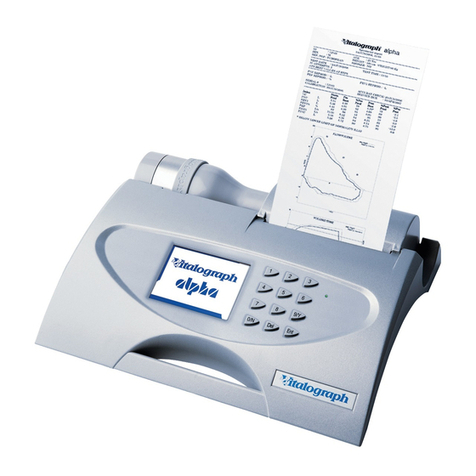
Vitalograph
Vitalograph alpha 6000 user manual

Huntleigh
Huntleigh SonicaidTeam Operator's manual

Dräger Medical
Dräger Medical Savina operating instructions

bort medical
bort medical MobiDig Flexion quick guide
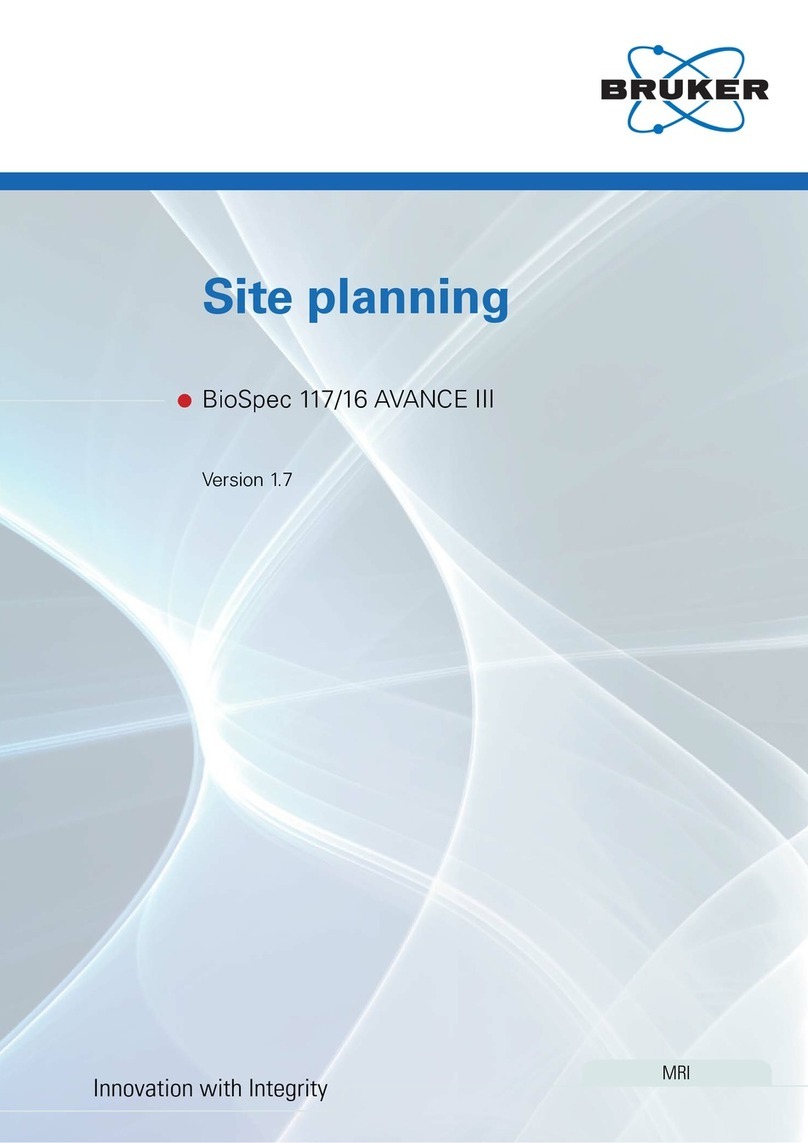
Bruker
Bruker BioSpec 117 AVANCE III manual
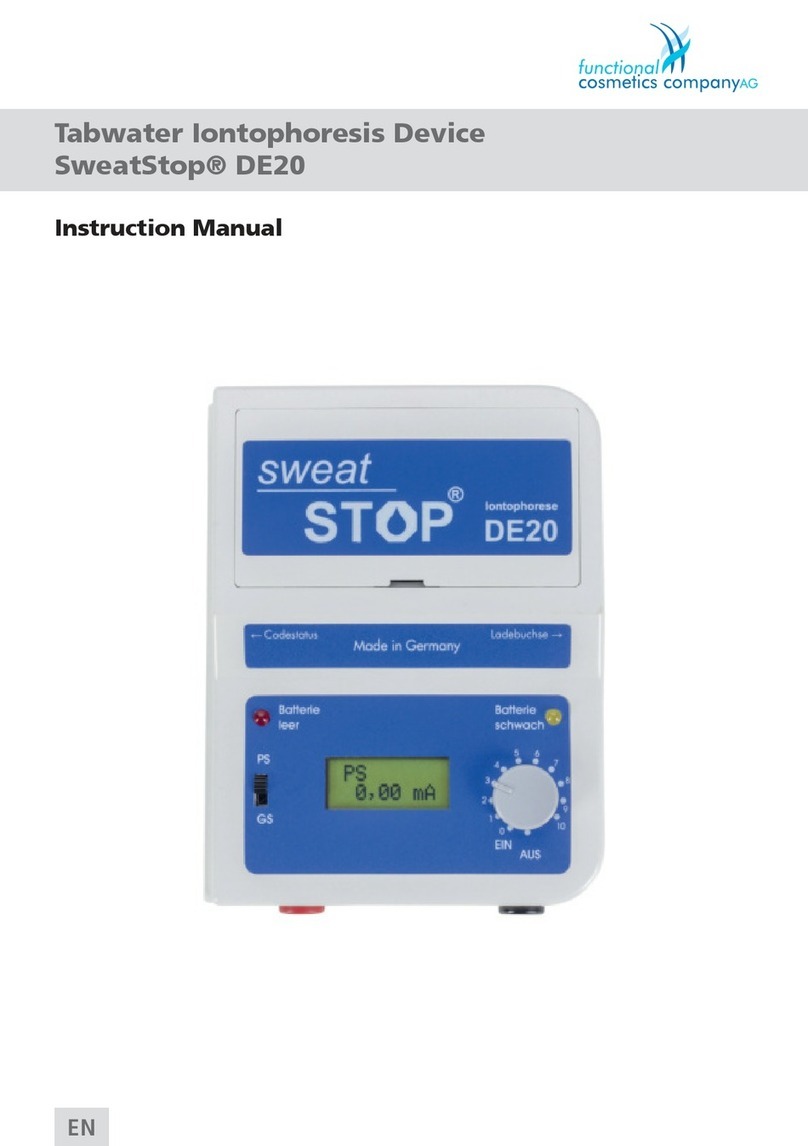
Functional Cosmetics Company
Functional Cosmetics Company SweatStop DE20 instruction manual
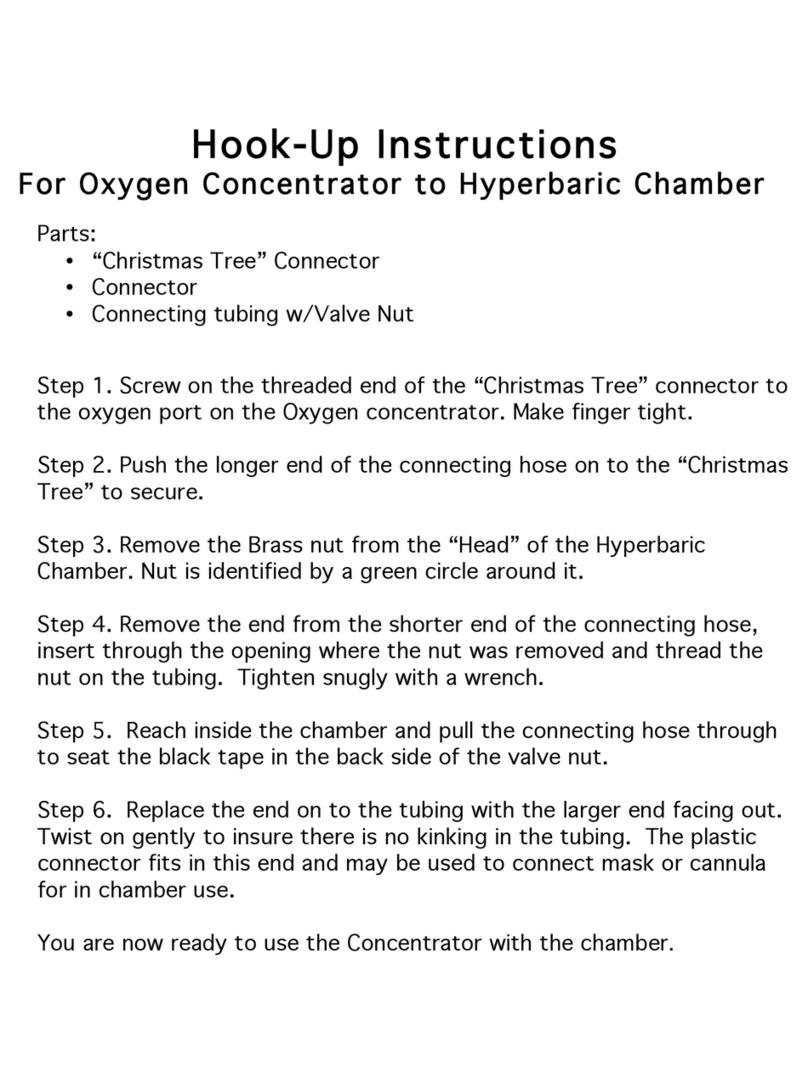
AirSep
AirSep newlife intensity Hook-up instructions

PSYONIC
PSYONIC THE ABILITY HAND user manual
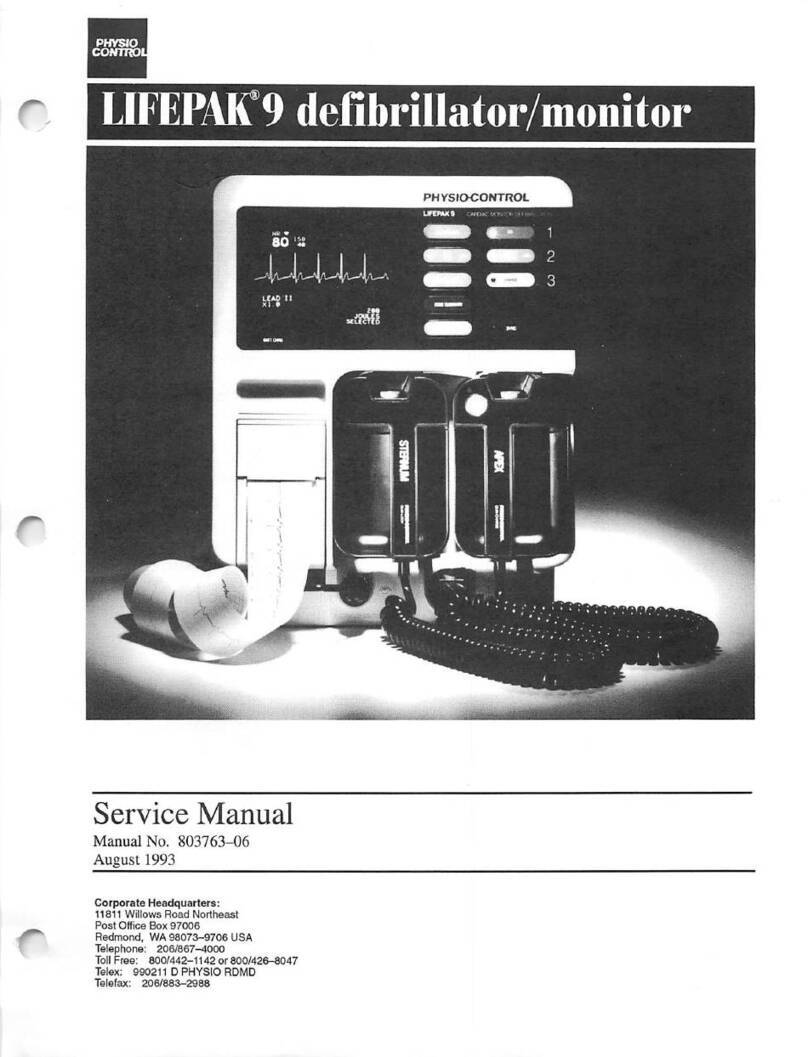
Physio Control
Physio Control LIFEPAK 9 Service manual
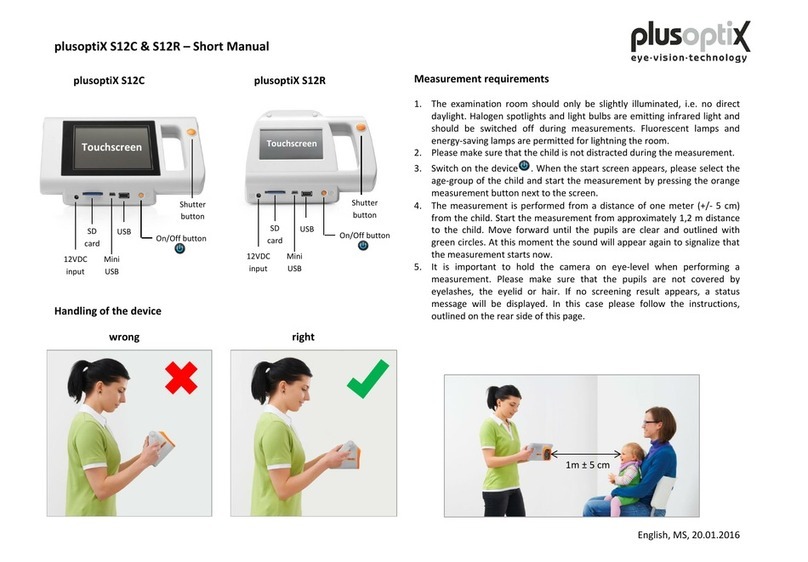
PLUSOPTIX
PLUSOPTIX S12C Short manual
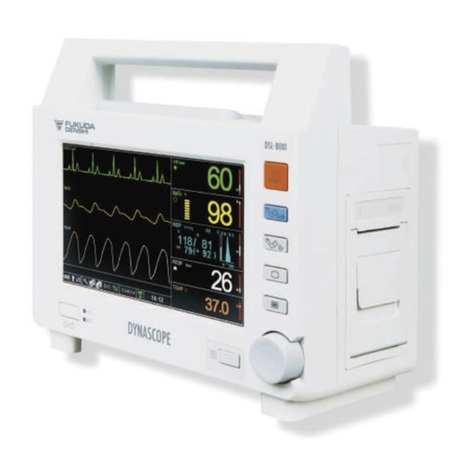
Fukuda Denshi
Fukuda Denshi Dynascope 8000 Series Operation manual
